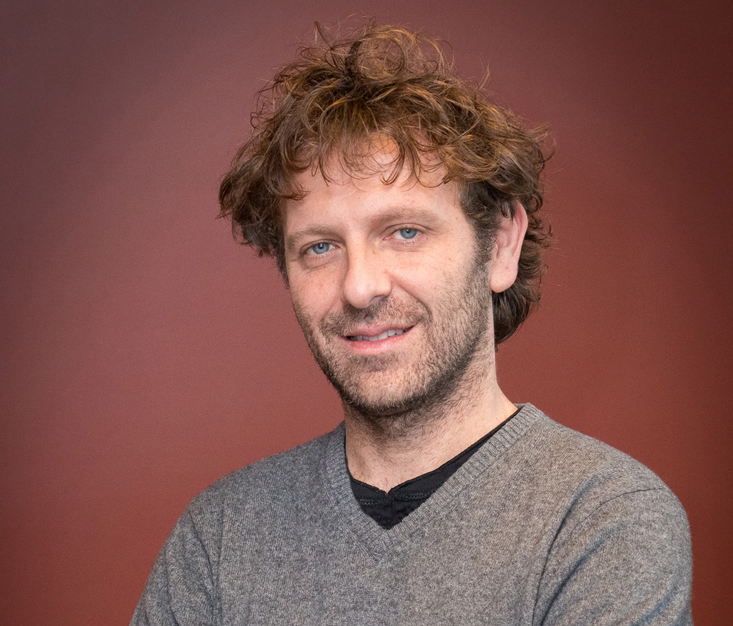Part of Vittorio Sebastiano’s job is to babysit a few million stem cells. The research professor of reproductive biology at Stanford University keeps the cells warm and moist deep inside the Lorry I. Lokey Stem Cell Research Building, one of the nation’s largest stem cell facilities. He’s joined there by an army of researchers, each with their own goals. His own research program is nothing if not ambitious: He wants to reverse aging in humans.
Stem cells are the Gary Oldman of cell types. They can reprogram themselves to carry out the function of virtually any other type of cell, and play a vital role in early development. This functional reprogramming is usually accompanied by an age reset, down to zero. Sebastiano figures that if he can separate these different kinds of reprogramming, he can open up a whole new kind of aging therapy. Nautilus caught up with him last month.

What impact will your work have on aging research?
I’m studying whether we can separate the process of functional reprogramming of cells from the process of aging reprogramming of cells. Typically these two processes happen at the same time. My hypothesis is that we can induce cellular rejuvenation without changing the function of the cells. If we can manage to do this, we could start thinking about a way to stall aging.
What is the difference between functional and aging reprogramming?
The function of a skin cell is to express certain proteins, keratins for example that protect the skin. The function of a liver cell is to metabolize. Those are cell-specific functions. Reprogramming that function means that you no longer have a liver cell. You now have another cell, which has a totally different function. Age, on the other hand, is just the degree of usefulness of that cell, and it’s mostly an epigenetic process. A young keratinocyte cell is younger than an older keratinocyte but it is still a keratinocyte. The amazing thing is that if you take an aged cell that is fully committed to a certain function, and you transplant its nucleus into an immature egg cell called an oocyte, then you revert its function to a pluripotent, embryonic one, which means it can become any other cell of the body—and you also revert the age of that cell to the youngest age possible. It’s mind-blowing to me.
This could be a paradigm shift in the way we approach aging.
How can you make a pluripotent cell in the lab?
Historically, the way pluripotency was induced from non-pluripotent cells was by doing the procedure I’ve just described: so-called “somatic cell nuclear transfer.” You take a non-pluripotent cell, let’s say a liver cell or a fibroblast or any other cell. You isolate its nucleus and transplant it into an egg, an oocyte, which was previously deprived of its own nucleus. This produces what is known as a reconstituted embryo, in which the cytoplasm is the original egg’s cytoplasm, and the nucleus is the nucleus of the cell that you isolated. The egg has this amazing ability to reprogram the nucleus to an embryonic-like state. Since embryonic cells are naturally endowed with a pluripotency program, if you then take that embryo and put it in culture, you can establish pluripotent stem cell lines. Shinya Yamanaka, a Japanese researcher that got a Nobel prize for his work three years ago, demonstrated another technique, called induced pluripotent stem cells, or iPS. He showed that if you simply boost the expression of four particular transcription factors inside a non-pluripotent cell for a few weeks, you also could create an embryonic-like program. The factors also somehow wipe off the epigenetic memory of the cell, making them younger.
How close are we to using pluripotency induction in therapies?
iPS in mice was described in 2006, and in humans in 2007, so it’s been already 10 or 11 years. The first clinical trials using iPSCs are just about to get to early phase I and phase II. There has been a lot of hope and promise but it’s been a little slow. The reason being that when it comes to clinical applications, you have to consider a number of complications. You need to know how to make the cells very efficiently, and then they need to be safe. There will be more clinical trials coming up based off iPSs. For example, I am collaborating with an iPS-based platform for the cure of a skin disease called epidermolysis bullosa. We’re trying to move this to the pre-clinical stage over the next few years, and then if we pass that, we will potentially start moving into a phase I clinical trial. Things are moving forward pretty fast now.
Why is pluripotency lost as cells mature?
If an organism cannot control pluripotency very tightly, it becomes a survival threat. Pluripotency is only supposed to be a transient feature in development. If you lose the ability to control it, the cells start making ectopic (or abnormal) tissues and organs and tumor-like masses. Having said that, pluripotency can be made a constitutive feature of cells if you extract the cell from their in vivo environment, and you put them in culture. Pluripotency can be maintained in vitro, but this is an in-vitro artifact.
Are germ cells immune to aging?
Yes and no. They definitely do age, but not to the same extent as other cell types. In males, spermatogenesis continues all the way from puberty to old life. If you take a 90-year-old man, there are still germ cells and spermatogonial stem cells. They do age, because it’s clear that the sperm of an older man is different from the sperm of a younger man, but they do not age as heavily as other cells. This is fascinating because we do not understand the process. Female cells do age, and the consensus is that there are no germ stem cells in the ovary so these cells lack a molecular program to stay young. But once you put together an egg and a sperm, then there is an aging erasure mechanism, which is embryonic-specific, that we also do not understand.
Why are you interested in separating aging reprogramming from functional reprogramming?
The experiments of somatic cell nuclear transfer and iPS derivation clearly indicate that both functional and aging reprogramming can be achieved. However, these technologies are very inefficient and cannot be used as whole-body anti-aging measures because the process of reprogramming to an embryonic stage can lead to tumorigenic cells. Instead, if we could separate the two types of reprogramming and achieve only reprogramming of age without touching the function of a cell, then in principle we could apply reprogramming in vivo to every single cell in the body and rejuvenate them. This could be a paradigm shift in the way we approach aging.
If we can understand the mechanisms by which reproduction resets the clock of cells, we may be able to use it to reset the clock of the cells as a therapy for aging.
What techniques will you use to achieve this separation?
My lab is using a process very similar to iPS derivation. The only difference is that we perform reprogramming for a very short period of time and in a very controlled fashion. By doing so we are discovering that we can erase or revert a great deal of cellular aging while leaving the function of a cell unaltered. We have also discovered that, unlike the iPS derivation, our rejuvenation process is very efficient and can engage a large number of cells, making us hope that one day we may find a way to apply it to all the cells of the body.
What is inspiring your approach to this problem?
We were inspired by the idea that reproduction leads to rejuvenation. Every time we reproduce, the newly formed individual is a brand new, youthful individual. This is true for every species. If this weren’t the case, we would accumulate so much aging in a few cycles of reproduction that we wouldn’t be able to reproduce anymore. We do not understand how this happens. It could be some special mechanism in germ cells that slows down their aging process, or a mechanism of reprogramming set in place by the embryo, or a combination of the two. What is certain is that reproduction is a natural process of aging and functional reprogramming. If we can understand the mechanisms by which reproduction resets the clock of cells, we may be able to tease that mechanism apart and use it to reset the clock of the cells as a therapy for aging and aging-associated diseases.
Do the ethics of age reversal concern you?
Back in the 1980s and ’90s, there was a lot of fear of nuclear transfer technology, which allowed for cloning animals. People were thinking, “Oh, we are gonna clone people. We are gonna make armies of super-intelligent tall blondes.” I could see that was obviously a reasonable fear. On the other hand, the knowledge that came from nuclear transfer experiments led to the discovery of induced pluripotent stem cells (iPS), which today show huge promise. People aren’t worried that we are going to clone people anymore, and everyone is excited about using iPS for regenerative medicine. It’s kind of the same situation with aging. Yes, the ambition is huge, the potential applications could be dramatic, but that doesn’t mean that we are going to become immortal in some problematic way. After all, one way or the other, we have to die. We will just understand aging in a better way, and develop better drugs, and keep people happier and healthier for a few more years.
Victor Gomes is an editorial intern at Nautilus.
Lead photocollage credits: newart graphics; Dmitry Lobanov / Shutterstock


























